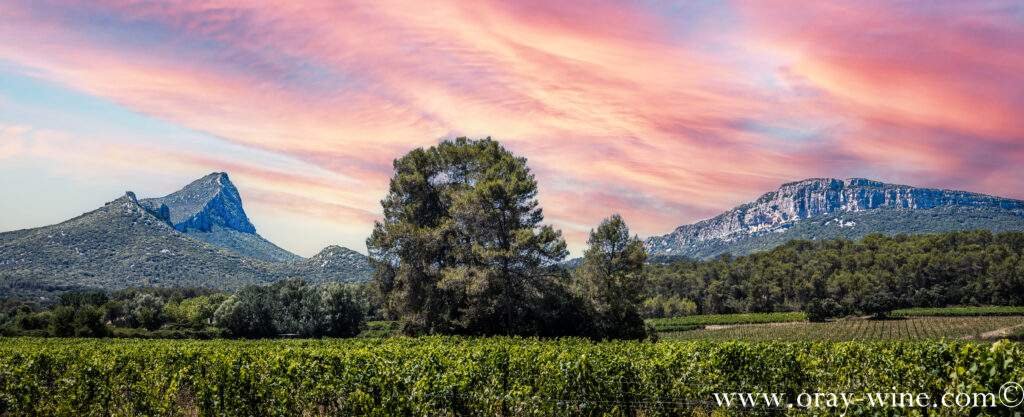
Within the Languedoc region, 30 kilometers north of Montpellier, sit the dramatic peaks of the “Pic Saint Loup” (Saint-Loup Peak) and the Falaise de l’Hortus (Hortus Cliff). Facing each other in the middle of a breathtaking natural scenery that only the South of France has a secret recipe for. This incredible décor becomes even more unforgettable at sunset when the last sunlight reflects on these two rocky limestone mounts, igniting them with a superb reddish color. This area is also the spot where locals go for peaceful hiking and Ceceles lake summer bathing. What about wines? Well, the Pic Saint-Loup area is undoubtedly one of the most underrated appellations in the world of wine today. So, if you are anything close to a wine enthusiast and are planning to take your next vacation near Montpellier, you have selected the right post! So, let’s just dig into it and give you more details about the region I am from, its wine production, the spots that you need to go to, and, of course, the wines to taste.
Pic Saint-Loup: a whole province’s emblem
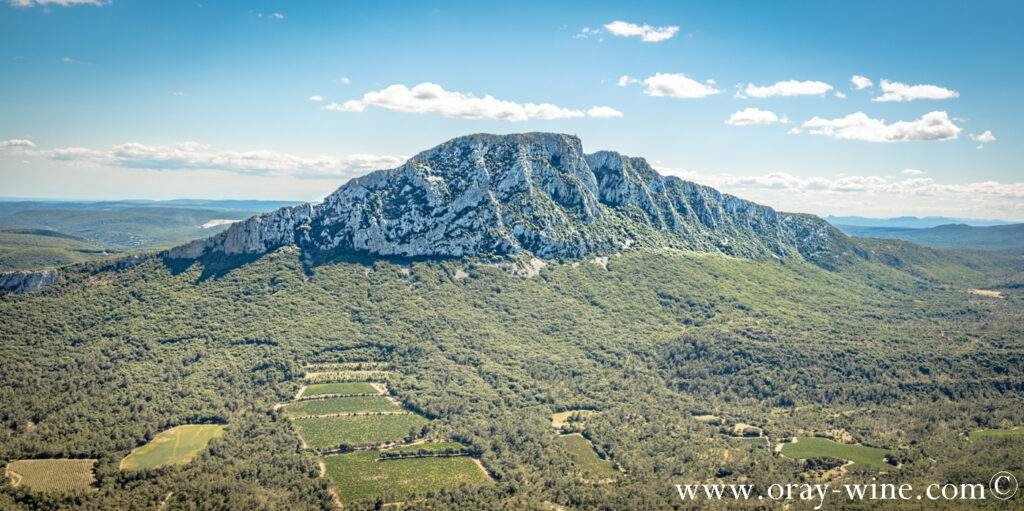
2022, Copyright Oray-Wine.com, All rights reserved
This absolutely incredible scenery has been known since antiquity, with Roman writers and historians praising its charms. Of the two peaks facing each other, the Pic Saint-Loup (648 meters high) is the most famous and the most iconic. The reason for that is mainly because, of the two, it is the one that can be seen from miles around. Either from beaches or from boats navigating through the Mediterranean Sea, its unique shape is unmistakable and dominates the landscape. The Hortus Cliff (500 meters high) is hidden by the Pic-Saint-Loup at most viewing angles. This is probably the reason why the “Pic Saint-Loup” is the one whose reputation shines. These two mountains are located in the Occitanie region (formerly called “Languedoc-Roussillon” before the administrative merger with the Midi-Pyrénnées region orchestrated by President Hollande). They are on the border of the municipalities of Valflaunès and Cazevieille in the Hérault Département (i.e., Hérault Province).
If you have the chance to go for one of the many hiking trails around that end up on one of the tops of the Pic Saint-Loup, you will enjoy a great panoramic 360° view. From here, you will be able to look down on one of the many vineyards, horse stables, and wild bull husbandries that you should have crossed during your drive through the area.
The many hiking trails that end up at the Top
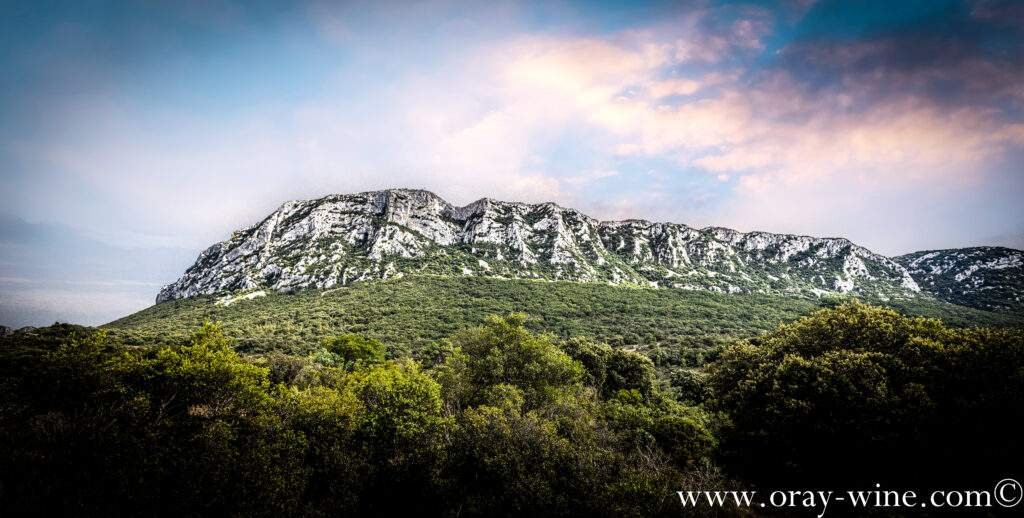
If you love hiking, this is a place for you. However, do not expect very sporty trails as none of the hikes are very difficult to do. They are almost all between easy and intermediate. Just make sure to have the appropriate shoes, some water, and some food. All the trails are well marked. My two favorite trails are the Pic Saint Loup Chapel and the Montferrand Castle.
For the Pic Saint Loup Chapel Trail, I advise you to park at the free Pic Saint-Loup Parking. From here, it should take you approximately one hour to walk (2.6 kilometers) to the top and enjoy the view.
For the Montferrand Castle Trail, I advise you to park at the free Montferrand Parking. From there, it will take you roughly 30 minutes to get to the top and enjoy a very different view.
Please note that there are many other very interesting treks to enjoy around here, like the Ravin des Arcs, Les Marches des Géants, Source de Gornies, etc. Some of the hardest treks are organized by some specialized local companies.
Cécélès Lake: the turquoise/emerald color lake at the foothills of the Pic Saint-Loup
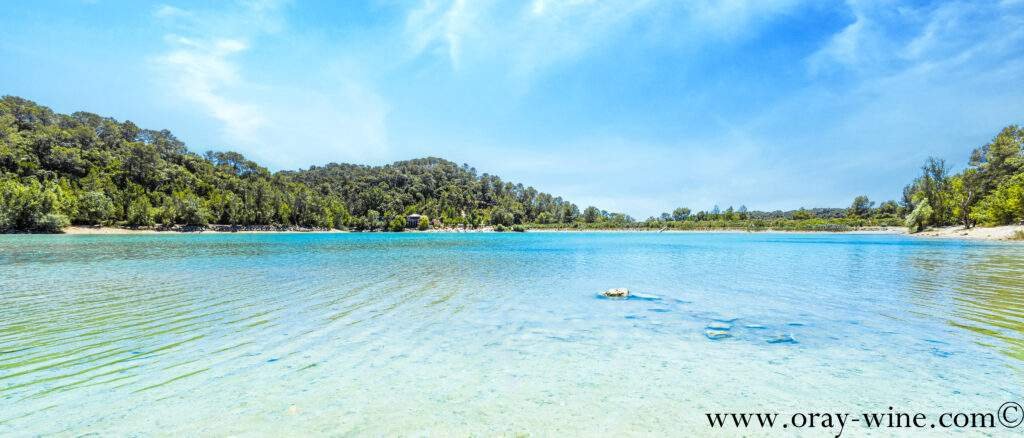
At the base of the Pic Saint-Loup, lies a private agricultural water reserve called “Lac de Cécélès”. The lake, which can be the starting point for a stroll (30 to 40 minutes to travel around it), a day of swimming, or a picnic, depends on the light. The parking and access to the lake are free in the off season (from September to June). However, be mindful of the fact that you will have to pay 5 euros per adult and 3 euros per child in July and August to access the parking and the monitored swimming area. This is because the lake is a private area owned mainly by the restaurant “La Guinguette des Amoureux”. As a consequence, if you are a client of the restaurant, the parking fees will be deducted from your final check. However, if you are in the midst of the summer season and still want to enjoy a walk around the lake, you can, but you will have to walk. Just park somewhere in the city of Saint Mathieu de Tréviers (Parking de la Grenouille, Parking de l’Ancien Abattoir, Parking du Boucher…), take your Google Map, and get ready to walk a little (maybe slightly less than 30-40 minutes). This is possible because the main road access and parking to the lake may be private, but areas and hiking trails around it are public. Just make sure to take the D26 road until this point to turn left, then make sure to turn right on the little trail before the Dominicaines des Tourelles. If you take the larger trail after the Domaine des Tourelles, you will have to go up, and you are going to hate the experience of the many detours and having to cut through inappropriate trails to go down the lake. Once there, you will be able to pic-nic, take a tour around the lake, sun bathe… But, please take note that everything from dogs and horses to fires, camping, fishing, and motorized vehicles is absolutely forbidden. The policemen are very strict and you may be fined very easily, especially at summer times when they are scared of wild fires. They do it in order to protect and preserve this fragile ecosystem.
The most convenient solution is to pay for the parking and enjoy a great meal at The Guinguette des Amoureux, a very romantic restaurant with a great view of the lake. The food is good and there are many animations all year long (yoga sessions, concerts, famous DJ performances…). Just make sure to call first, as the restaurant is often fully booked.
If you are looking to enjoy another great lake spot around, you can try to go to the Claret Lake (i.e., Lac de Claret). If you take some small and sinuous roads, you will be able to park next to the lake and still enjoy a good view and setting.
Pic Saint-Loup Wines: the next big thing?
Traces of wine making in this area date back to the Roman empire. Part of the production was brought to the Roman port of Lattara (an inland city called Lattes today) to be sold across the Roman empire.
Between 1955 and 1966, the producers started to organize and became one of the founding members of the VDQS Coteaux du Languedoc (see my article on VDQS to learn more), which became the AOC Languedoc in 1985.
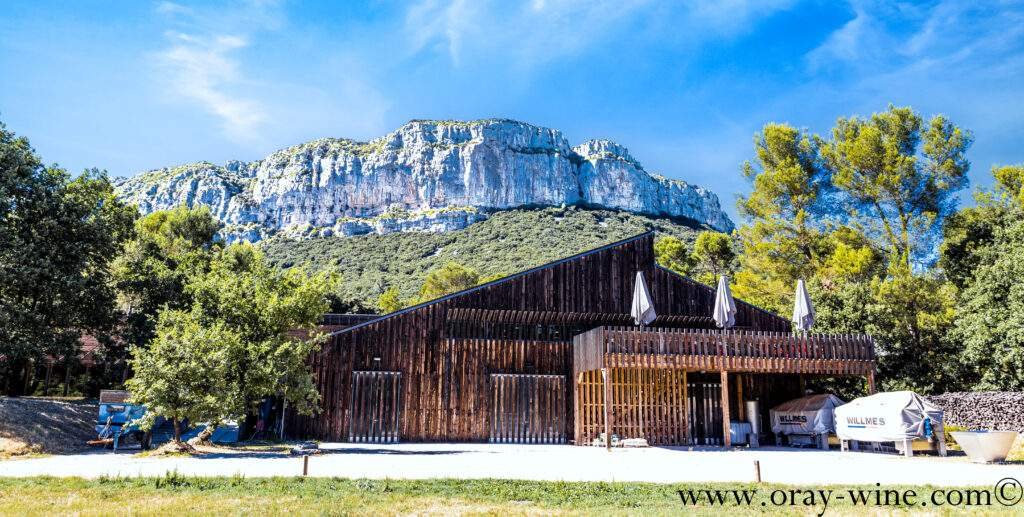
Prior to being granted its own AOC in September 2016, the Pic-Saint-Loup (also spelled Pic-St-Loup) was one of the most popular named crus in the AOC Coteaux du Languedoc (later renamed AOC Languedoc). This means that this renowned terroir was allowed to juxtapose its local name next to the regional appellation to distinguish its peculiarities from the rest of the region. Well before 2016, almost any local customer knew of these wines to the point that it was very common to order a “Saint-Loup” at some of the best restaurants around. This appellation is known for having very few (almost no) Carignan vines throughout the area, which is quite rare in the Languedoc. It is also historically known for its very low level of Caves Coopératives producers (jointly owned winemaking facilities).
This appellation only produces red wines and rosés. Consequently, white wines are produced under the local PGI (IGP) or the larger umbrella appellation (AOC Languedoc). They are usually a blend of Marsanne and Roussanne. The AOC Pic-Saint-Loup covers 15 towns in the Hérault and 2 in the Gard, all dominated by the sharp point of the Pic Saint-Loup, one of the most spectacular sites in the Languedoc vineyards.
Appellation requirements
“winegrowers have found that the Syrah grape was one of the best fits for the combination of the unique soils and micro-climate”
The Pic Saint-Loup vineyard, planted on predominantly limestone soils, is part of a landscape of scrubland and pine forests, a succession of ridges and valleys. The climate there is cooler and wetter than in the rest of the Languedoc. The rains, which fall in spring and autumn, allow the vines to avoid drought and water stress. This in turn allows planting at a high density, a factor of concentration. In August and September, the significant thermal amplitude between day and night promotes aromatic expression and acidity. These conditions are conducive to the syrah grape variety, one of the main varieties of the new appellation, alongside the grenache and mourvedre. This results in the infamous GSM blends (Grenache Syrah Mourvèdre), which are representative of red wines from the south of France. The other accessory grape varieties allowed for reds are carignan, cinsault, counoise, and morrastel. As for the rosé production, the gray grenache grape can also be added to the blend. Both the reds and the rosés must always combine at least two grape varieties, with Syrah (= Shiraz) being generally the most dominant (50% minimum for reds and 30% for rosés). Empirically, winegrowers have found that the Syrah grape was one of the best fits for the combination of the unique soils and micro-climate. This is why it plays such a key role in the wines of this area. They have, on the other hand, decided to plant Grenache and Cinsault in the driest areas. As per the Mourvèdre and the Carignan, they have shown better adequation in the hottest part of the Pic Saint-Loup production area.

Characteristics
“the common trait of all the wines produced in the appellation is the “garrigue” perfume”
Red wines derive from Syrah their dense texture, their intense aromas of black fruits and licorice, and their potential. They can live for 4 to 8 years without any problems. The rosés are also invigorating and fruity, but need to be consumed within a year of release.
The styles of red wine produced may be very different from one winery to another. They range from elegant with a medium body to a richer, stronger style. The more robust styles are probably made by wineries around the Claret area. The finest wines are probably made closer to both of the peaks dominating the valley. The most representative wineries of the latter style are: Chateau de Cazeneuve, Domaine de l’Hortus, Ermitage du Pic-Saint-Loup, Chateau de Lancyre, Château de Lascaux, Domaine de Mortiès, and Mas Bruguière.
By and large, the common trait of all the wines produced in the appellation is the “garrigue” perfume. “Garrigue” can be defined as a form of low scrubland ecosystem and plant community typical of Mediterranean regions. Accordingly, it is often possible to distinguish this distinctive rosemary-thyme-pine fragrance from these wines.
Corconne’s Gravette
“crossed by a little river, nicknamed the “Emerald River” (Le Ruisseau de Vère) due to its particular green color”
It has to be noted that some vineyards located on the ancient plain of Corconne enjoy a unique soil called Gravette (75% limestone chips and 25% silty clay). This terroir is composed of little gravels (2 to 6 meters deep). This is probably one of the most exceptional Terroirs of the Languedoc, inherited from the melting of a Jurassic glacier which carried all these gravels to the plain. This whole area is crossed by a little river, nicknamed the “Emerald River” (Le Ruisseau de Vère) due to its particular green color. The cave co-operative of La Gravette de Corconne, located in the Gard province, is one of the rare historic co-operatives in the area and produces very high-quality wines. Its “Intégrale AOP Pic Saint-Loup” is definitely worth a try and will show every wine lover that co-operatives can also produce top-end wines when they decide not to produce mass-market wines.
Pic Saint-Loup: early adopter of Organic and Biodynamic winemaking techniques
If you visit the little towns all around the Pic Saint-Loup, you will see many official city road signs saying “0 Phyto” (meaning no pesticides and other synthetic products). In fact, the region has been one of the early adopters of both organic and biodynamic grape growing. This was greatly helped by the sunny conditions, the strong Mistral winds, and the high level of rocks in the soil. It dries grapes rapidly after any rain, preventing fungal diseases from occurring as well as draining water effectively into the soil to avoid damp and moist conditions.
Today, the area is also a bastion of natural wine making, which can be summarized as “nothing added, nothing removed”.
My Top-3 wineries to taste
o Domaine de l’Hortus
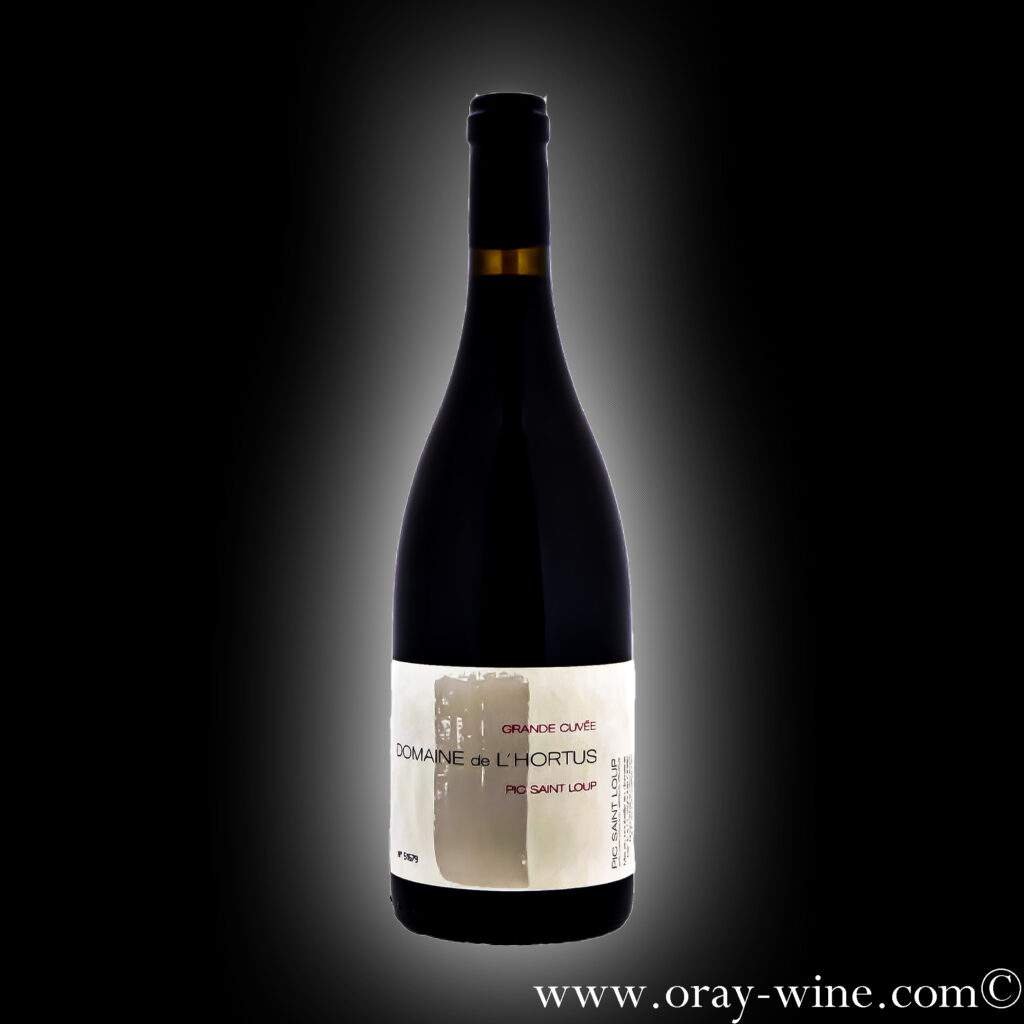
Grande Cuvée Rouge, AOC Pic Saint Loup
This is probably one of the flagships of the appellation. The Domaine de l’Hortus, belonging to the Orliac family, has made great choices in grape varieties, acquiring new land to plant vines on, and above all, in modernizing its wine making facilities. When you visit the facilities, you will immediately feel that many investments have been made to make the best wines possible. From the regulated stainless-steel tanks for precise fermentation to the best oak barrels to age wines. And the result can be clearly felt in the glass, with the “Grande Cuvée” red wine playing in the big leagues.

o Mas Bruguière
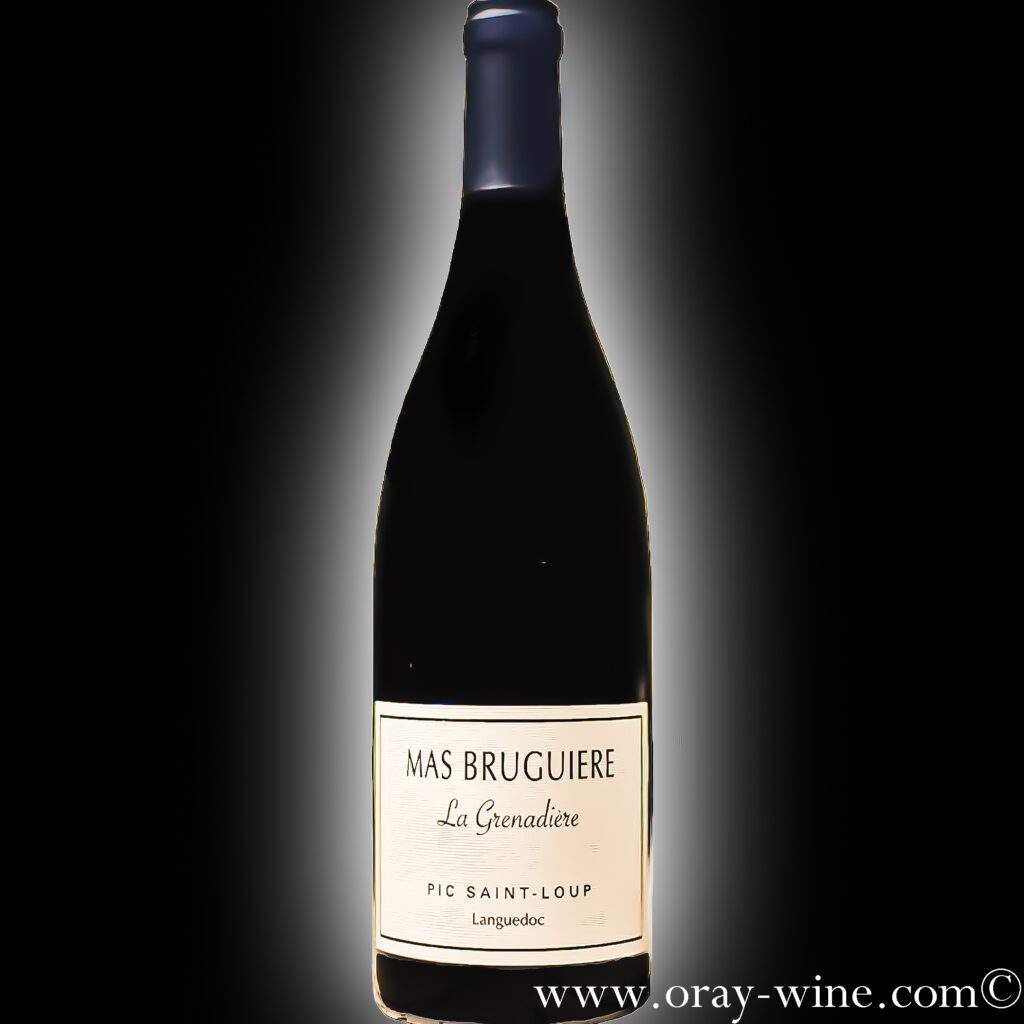
Located right next to the Domaine de l’Hortus, Mas Bruguière enjoys the same unique position of its vineyards sandwiched between the North flank of the Pic Saint-Loup and the South flank of the Hortus Cliff. This creates an ideal and unique micro-climate where Mistral winds are accelerated by this corridor, the sun disappears earlier, and soils are free-draining. Its red wine, called “La Grenadière” made from 90% Syrah and 10% Grenache is an exceptional value for money (only 29 euros for that!)
o Ermitage Pic Saint-Loup
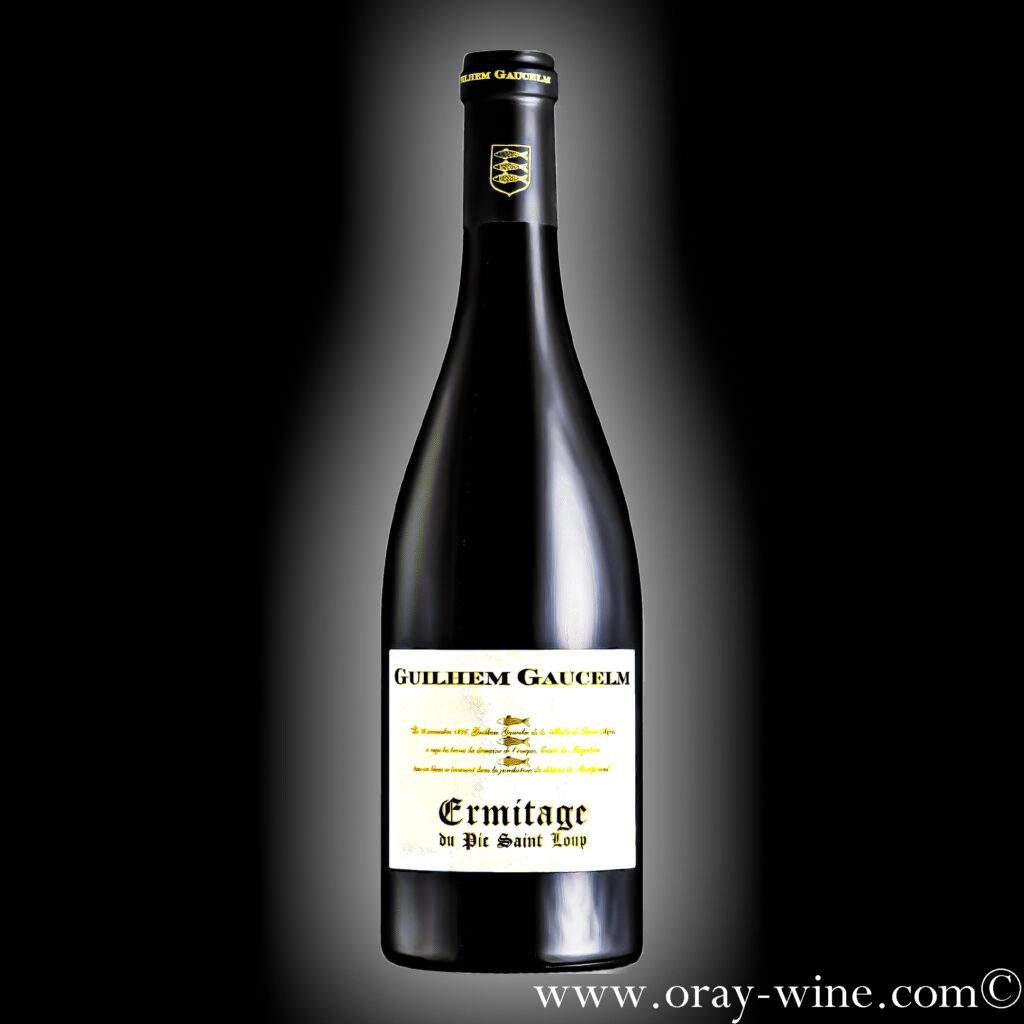
AOC Pic Saint Loup
The Ermitage Pic Saint-Loup‘s obsession with biodynamically grown grapes and natural wine making processes is an absolute pleasure in terms of results in the wine glass. Its Guilhem de Gaucelm red wine, made from 95-year-old Grenache vines (50%, the rest is from Syrah), is a true wonder.

My final advice: if you are planning to visit the region during the month of June, I really advise you to register for the “Vignes Buissonnières” festival (to be booked in advance). It is a renowned event where you walk around the area and can taste wines from over 70 local producers. Otherwise, you can go to the Maison Chabanol in Saint Mathieu de Tréviers and take some of their hand-made madeleines, my favorite: the honey one! Then go for a trek to the top of the peak. Enjoy eating them while they are still fresh with the 360° view. In the evening, just buy a good bottle of red wine (little aged if possible) at one of the many wine shops around. Finally, have dinner at one of the public picnic areas with a panoramic view of the Pic Saint-Loup and enjoy the sunset.

Follow me on my Social Media
Wine is a gourmet treasure, do not abuse alcohol!
None of this content has been sponsored
I did not receive any gifts or free samples that could be related to this article
Wine is a gourmet treasure, do not abuse alcohol!
None of this content has been sponsored
I did not receive any gifts or free samples that could be related to this article



